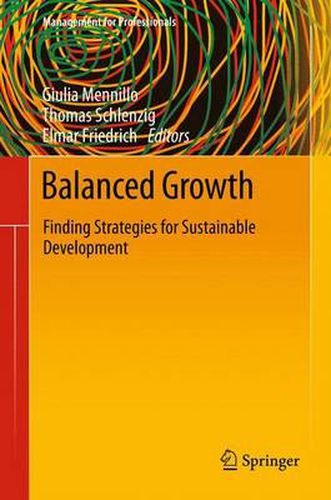Readings Newsletter
Become a Readings Member to make your shopping experience even easier.
Sign in or sign up for free!
You’re not far away from qualifying for FREE standard shipping within Australia
You’ve qualified for FREE standard shipping within Australia
The cart is loading…






This title is printed to order. This book may have been self-published. If so, we cannot guarantee the quality of the content. In the main most books will have gone through the editing process however some may not. We therefore suggest that you be aware of this before ordering this book. If in doubt check either the author or publisher’s details as we are unable to accept any returns unless they are faulty. Please contact us if you have any questions.
What is balanced growth? This book shows that the definitions and implications of the concept of balanced growth vary significantly among the different disciplines in economic science, but are not exclusive at all.
Terms such as sustainability or balanced growth have become buzzwords. In practice, they are often a desirable vision rather than an achievable objective. Why? Doubts may arise about the extent to which such concepts are compatible with a modern market economy. Is balanced growth possible at all? Is it reasonable to accept balanced growth as a norm? Why should a balanced growth path be a desirable strategy to pursue for policymakers, managers, employees, and other societal stakeholders? Empirical evidence suggests that the actual worldwide economic growth is not balanced at all. Meanwhile, ever since the beginning of the financial and economic crisis in 2007 and its accompanying spillover effects, our globalizing world has uncompromisingly shown the flip side of its coin. Its crisis-prone character has intensified the discussion about our economic system’s sustainability. Questions related to acceptable sovereign debt levels, suitable trade deficits and surpluses, firms’ growth targets, resource management and efficiency have aroused high interest. What is the cause of the observed imbalances? In our opinion, this debate must involve rethinking the qualitative and quantitative dimension of our present understanding of the nature of economic growth.
This book accompanies the 9th DocNet Management Symposium of the University of St. Gallen, Switzerland. It contains contributions of the symposium’s panel speakers, renowned authors to the field and young researchers. The Ph.D. students’ and post-doctoral association DocNet organizes the DocNet Management Symposium on a yearly basis with the goal to foster exchange between academia and practitioners.
$9.00 standard shipping within Australia
FREE standard shipping within Australia for orders over $100.00
Express & International shipping calculated at checkout
This title is printed to order. This book may have been self-published. If so, we cannot guarantee the quality of the content. In the main most books will have gone through the editing process however some may not. We therefore suggest that you be aware of this before ordering this book. If in doubt check either the author or publisher’s details as we are unable to accept any returns unless they are faulty. Please contact us if you have any questions.
What is balanced growth? This book shows that the definitions and implications of the concept of balanced growth vary significantly among the different disciplines in economic science, but are not exclusive at all.
Terms such as sustainability or balanced growth have become buzzwords. In practice, they are often a desirable vision rather than an achievable objective. Why? Doubts may arise about the extent to which such concepts are compatible with a modern market economy. Is balanced growth possible at all? Is it reasonable to accept balanced growth as a norm? Why should a balanced growth path be a desirable strategy to pursue for policymakers, managers, employees, and other societal stakeholders? Empirical evidence suggests that the actual worldwide economic growth is not balanced at all. Meanwhile, ever since the beginning of the financial and economic crisis in 2007 and its accompanying spillover effects, our globalizing world has uncompromisingly shown the flip side of its coin. Its crisis-prone character has intensified the discussion about our economic system’s sustainability. Questions related to acceptable sovereign debt levels, suitable trade deficits and surpluses, firms’ growth targets, resource management and efficiency have aroused high interest. What is the cause of the observed imbalances? In our opinion, this debate must involve rethinking the qualitative and quantitative dimension of our present understanding of the nature of economic growth.
This book accompanies the 9th DocNet Management Symposium of the University of St. Gallen, Switzerland. It contains contributions of the symposium’s panel speakers, renowned authors to the field and young researchers. The Ph.D. students’ and post-doctoral association DocNet organizes the DocNet Management Symposium on a yearly basis with the goal to foster exchange between academia and practitioners.